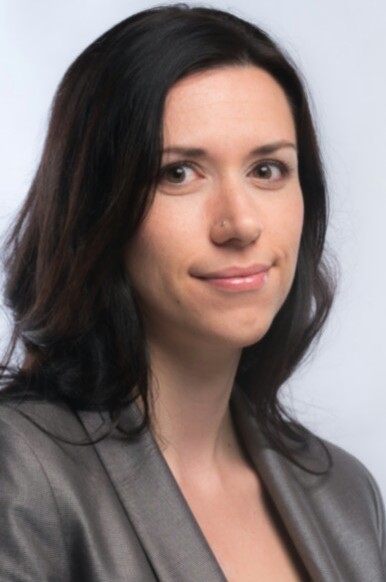
Dr Mapi Fleury, a passionate member of the Antiemetics Study Group and clinical pharmacist at the Centre Hospitalier Universitaire Vaudois (CHUV) shares her hospital’s experience managing patient nausea and vomiting within an interprofessional team. This work was also featured in a poster presentation at the EAHP conference.
In 2019, organizational changes within the Centre Hospitalier Universitaire Vaudois (CHUV) meant that the onco-haematology unit and solid cancer unit finally found themselves located in the same building and sharing the same prescription software. This change, although sensible, provoked a whole new dynamic as the teams compared each other’s professional practices, particularly in their supportive care practices around the management of nausea and vomiting (NV).
We identified a lack of departmental consensus, leading to heterogeneous therapeutic practices, confusion over the etiologies of NV and feelings of powerlessness among healthcare professionals. We decided to improve the whole process, from prophylaxis to treatment, by addressing specific knowledge gaps concerning CINV, improving pathophysiological and pharmacological knowledge, and implementing interprofessional management alongside the MASCC/ESMO guidelines, including into our onco-hematological treatment plans. The tools provided by MASCC are authoritative, transversal and provide clear structure and instruments that are eminently adapted to this type of approach.
We established a multidisciplinary working group to create a comprehensive, patient-centered NV management program. During this process, different professions learned about each others’ needs and fields of competency, enabling each to be heard and creating mutual benefits through sharing expertise and knowledge. Pathophysiological/pharmacological leadership was given to the clinical pharmacist, including developing and teaching specific protocols and supervising complex clinical situations in the field.
Much of the work of the group focused on attaining a therapeutic consensus and adapting the MASCC/ESMO guidelines to our local context. This required working at multiple levels. There was a lot of back and forth between uniquely clinical considerations (such as wanting to ensure the minimum number of pharmacokinetic interactions at a point in the treatment plan where we did not really yet know whether aprepitant would cause even more problems for our sarcoma patients taking multiple high doses of ifosfamide) and very organizational considerations (such as the fact that forgetting to take an antiemetic premedication per os at home could put our treatment planning for ambulatory breast cancer chemotherapy back 2 hours). We thus had to find a consensus about which NK1-receptor antagonist was the most suitable for our clinical situations and which “-setron” we should select for insertion into our combination drug therapies, to take just a few examples.
Most importantly of all, each patient can have their own specific needs, potential organ failures and the necessity to adapt their complex pharmacotherapies. Our breakthrough lines of antiemetics were devised as a response to the need to personalize care based on the foundations of existing lines of therapeutics that may already contain four or even five compounds for supportive care.
To borrow a quote from Paul Valéry, “If it’s simple, then it will always be wrong. And if it isn’t simple, it will be unusable.” Our approach was to create six standardized sets of antiemetics that all our staff members know and that are immediately and automatically included in cancer treatment protocols. With these, we can respond to the majority of the clinical situations encountered and the result is that we now have fewer patients suffering from NV and better team understanding of pathophysiological mechanisms, differential diagnoses and adverse drug effects—this also ended the use of unsuitable medications and dosages. Overcoming this critical situation also allowed us to begin non-pharmacological integrative care.
We’ve received very positive feedback so far from our patients, and it is incredibly gratifying to have patients who neither vomit nor feel nausea. We pharmacists and our colleagues are also very happy when we feel that we have made a real difference, especially when patients come to their next consultation and express their gratitude for not having felt terrible—as so many other patients do—thanks to our integrated supportive care solutions.
Our healthcare professionals feel a new sense of control, skill and assurance in how they are able to care for patients and treat their symptoms, even when oncology is not their primary discipline, such as when our infectious diseases colleagues help to care for our patients. The team feels more relaxed and more in control. Monitoring currently occurs via tracked files and oral feedback, but in the future, we aim to implement a scheme for the systematic follow-up of interventions, care evaluations and NV to assess the program’s overall impact. The stage after that will be to include patient feedback in a structured way.
I must say that our supportive care protocols are starting to show significant successes, to the extent that oncology units in surrounding hospitals are asking us about the magic ingredients in our recipes.
I definitely cannot say that implementing this has been easy. But thankfully, we have worked as an interprofessional, interdisciplinary team, extremely motivated by the idea of generating real changes and improving practices. Overall, it has been a great success, with different professions learning about each other’s needs and fields of competency, enabling each group to be heard and creating mutual benefits through sharing expertise and knowledge. It could have been far more complicated without the backing of MASCC’s tools. So, I cannot wait to get to Toronto and discover new ones!

